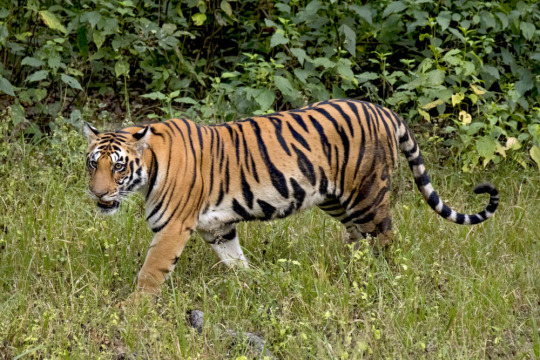#International Union for Conservation of Nature
Text

“Indian Wolf pack”
“The Indian wolf, a subspecies of the gray wolf, is known for its playful and noisy behavior. However, their playful moments in the wild are becoming increasingly rare as their population is declining throughout the Indian subcontinent, to the point of being considered endangered by the International Union for Conservation of Nature.”
by Siddhartha Ghosh
2023 Siena International Photo Awards
#siddhartha ghosh#photographer#siena international photo awards#indian wolf#wolf#animal#mammal#wildlife#gray wolf#international union for conservation of nature#endangered#nature
37 notes
·
View notes
Text

#TheRaven
...who just chased a Turkey Vulture out of his territory.
@BenAdrienProulx
April 23th, 2024.
#The Raven#Raven#Wildlife Need Protection#IUCN#International Union for Conservation of Nature#ECCC#Environment and Climate Change Canada#FeederWatch#Count Feeder Birds for Science#NCC#Nature Conservancy of Canada#Nature Photography#Nature Canada#Wild Bird Photography#Wildlife Photography#Animal Photography#Mountainous Parts of the Northern Hemisphere#Canada#The RavenKeeper
234 notes
·
View notes
Text

The number of endangered tigers around the world is 40 percent higher than previously thought, according to new data from the International Union for Conservation of Nature (IUCN).
The group estimates that there are between 3,726 and 5,578 tigers in the wild, up significantly from its last assessment in 2015. The new total is a reflection of both improved monitoring and the impact of conservation efforts.
“Although tigers are still endangered, their populations appear to be stable or increasing,” Jon Paul Rodríguez, chair of the IUCN Species Survival Commission, said in a statement. “We need to learn from these conservation successes, share them with the public, and increase our investment in evidence-based conservation action.”
#tiger#tigers#conservation#International Union for Conservation of Nature#IUCN#part of it is better monitoring of the tigers#BUT PART OF IT IS CHANGE FOR THE BETTER#oh brave new world
6 notes
·
View notes
Text

#Wolves
I need to say a few words here about Wolves and their role in biodiversity. Because I like them, but most of all, they're a must in the wilderness.
Like every time we are standing on the edge of a hiking trail of a National Park, a protected territory, we all must beware of the consequences.
Au contrary to what most people may think of its surface, no matter how large it might be, isn't big enough to sustain a healthy Wolf population over a long term. This large Predator requires a massive home range to find the prey it needs to survive. Studies have shown that all the Wolf packs in Parks must travel outside its boundaries to meet their needs. And these large Canids are also victims of habitat degradation and fragmentation, not to mention deaths of human origin.
And for people who don't know, Wolves are considered as an umbrella species. Which means that efforts to protect it benefit the entire ecosystem, since the Wolf's territory encompasses the territories of many other species with a similar home range.
As for being an apex Predators, Wolves play an important role in biodiversity. Yes, their presence has been scientifically proven to increase the abundance and diversity of plants, mamal's Birds, Amphibiants, and Reptiles. Wolves help to control the amount of Prey on their territory; this prevents an overpopulation of herbivores, which could be detrimental to plant regrowth. Wolves also give a boost to several other animal species by leaving their partially carcasses for scavengers to feed on. Through its influence on the entire food chain and by curbing excessive grazing. So yes, the Wolf is a key species needed to preserve the balance of Ecosystem.
To conclude; Wolves are very wary and will run away from any human they detect through their remarkable senses of hearing and smell - they can sniff out their Prey from more than 2kms away. Several studies have shown that Wolves will try to avoid humans at all costs and flee when approached.
Just to say that all citizens have a responsibility to protect the Wolves.
#Wolves#Wolf#Wildlife Need Protection#IUCN#International Union for Conservation of Nature#ECCC#Environment and Climate Change Canada#FeederWatch#Count Feeder Birds for Science#NCC#Nature Conservancy of Canada#Nature Photography#Nature Canada#Wild Bird Photography#Wildlife Photography#Animal Photography#Mountainous Parts of the Northern Hemisphere#Canada#The RavenKeeper
197 notes
·
View notes
Text
There are 40 percent more tigers in the wild than previously thought, but with a maximum of 5,578 on the prowl, they remain an endangered species, conservationists said Thursday.
The jump in numbers is due to improved monitoring, with the population thought to be stable or increasing, said the International Union for Conservation of Nature, but habitat protection projects showed that "recovery is possible".
The tiger reassessment came as the IUCN updated its Red List of Threatened Species -- the world's most comprehensive information source on the global conservation status of plants, animals and fungi, assessing their risk of extinction.
continue reading
3 notes
·
View notes
Link
Excerpt from this story from Treehugger:
For two decades, Razan Al Mubarak has focused on conservation. She was elected president of the International Union for Conservation of Nature (IUCN) last fall with goals of caring for biodiversity and tackling climate change.
Comprised of more than 18,000 experts and 1,400 member organizations, the IUCN is an international organization focused on conserving nature and how to have more sustainable use of natural resources. The group maintains the IUCN Red List of Endangered Species, which charts the global conservation status of animal, fungi, and plant species.
A native of the United Arab Emirates, Al Mubarak is only the second woman to head the group in its 72-year history. She’s also the first president from West Asia.
What are some of the biggest challenges that environmental stewards face in the world of conservation and species protection?
We face many challenges but I would like to focus on just one: how do we ensure that all stakeholders are involved in solutions to biodiversity loss—women, youth, people from impacted communities, farmers, and more.
For example, indigenous peoples make up 5% of the world’s population, yet they are stewarding, managing, and protecting over 80% of Earth’s biodiversity. Their experience with resilience and how to live in balance with nature provide the world with important knowledge about how to conserve biodiversity while adapting to climate change.
What advice do you have for the average person who wants to help with the environment and conservation?
I believe that every person has a role to play in conservation and the protection of our environment, even if just a small one in their community, backyard, or nearby park or pond. I like to think of it this way: There are 7.8 billion people on this planet, and we have 10 billion species. If just one individual out of 10 is empowered to protect a potentially endangered species, we have addressed the problem.
22 notes
·
View notes